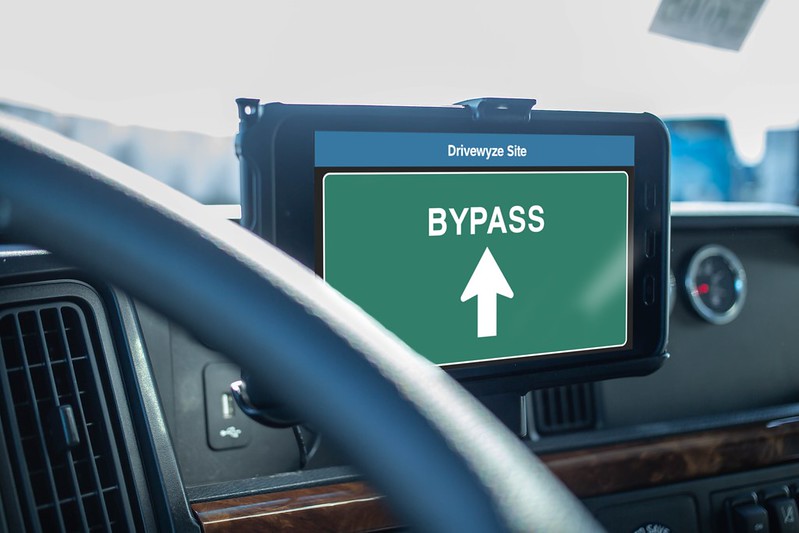
Drivewyze, a leader in the transportation technology industry that builds innovative solutions for commercial vehicle fleets, drivers, and transportation infrastructure owners and operators, has announced a new partnership with one.network, a leading road management, and work zone data technology provider. With this partnership, one.network is improving the quality of data regarding work zones and lane closures that are provided to state transportation agencies. This information is then extended into Drivewyze’s connected truck network via in-cab alerts to improve roadway safety.

The addition of lane closure and work zone safety programs is the newest offering within the Drivewyze Smart Roadways alerts portfolio available to state transportation agencies. Using one.network’s application, construction crews can activate and deactivate lane closures from the field, providing improved data quality over traditional lane closure and work zone programs. To disseminate this data, one.network’s data feeds can be pushed to passenger vehicles and smartphone applications via popular GPS providers and routing apps and now, through this partnership, to Drivewyze’s network of cross-platform connected trucks.
“Today, one.network offers improved work zone and lane closure data to connected vehicles and the motoring public,” said Brian Heath, CEO of Drivewyze. “With this partnership, Drivewyze can extend these work zone and lane closure safety programs into commercial motor vehicles, offering state agencies a unique one-to-many reach across the regulated and, historically, fragmented trucking industry.”
In addition, the joint offering delivers industry-first performance reporting on the program’s connected truck reach and impact on driver behaviors, which allows transportation agencies to adopt the service as an extension of their state highway safety and traveler information programs. Truck drivers receive Drivewyze safety notifications free of charge through Drivewyze’s industry-leading partner network of in-cab telematics and electronic logging devices.
“Lane closures and work zones occur frequently on roadways today. Speeding, weaving, and congestion create dangerous environments for other drivers and roadway workers,” said Heath. “Our partnership allows alerts to be provided to drivers of all vehicle types, which can help them prepare to slow down or change course if there is an alternative route available. This can also dramatically improve safety for other vehicles and for those working on the roadway. This is the first holistic approach to the lane closure and work zone management that addresses data quality, vehicle reach, and impact on driver behavior. It’s exciting to know that commercial vehicles are a key element of this program and that real-time work zone alerts can be ‘pushed out’ to commercial truckers by transportation agencies with a click of a button on one.network’s Live Link application. This addresses a common agency pain point -- currently available work zone and lane closure data often do not reflect actual conditions. This changes that.”
“Fatalities on U.S. roadways continue to increase at an alarming rate and we know that work zones are among the most dangerous areas for trucks to navigate. This partnership has enormous potential to help agencies save the lives of work crews, truck drivers, and all road users,” said James Harris, founder, and CEO of one.network. “We’re setting a precedent for the transportation industry by enabling critical lane closure information to be sent straight from the construction worker in the work zone, to the truck driver in the cab, using the largest connected truck network in North America. By working together, we can deliver the right information, at the right time, so drivers can make better decisions and improve work zone safety for all.”
Recent government safety data illustrates the problem and why alerts are needed. The data shows that one out of three fatal crashes in a work zone involved at least one large truck. “Situational awareness -- through real-time alerts -- can reduce the risk of collisions significantly,” said Heath.
In addition to in-cab alerts, fleets can use the one.network dashboard to see where lane closures are planned in the hours ahead. “This mapping helps fleets work in advance, especially in their major lanes of transport,” said Heath.
For commercial trucks, speed, and collisions can be a deadly combination. Tractor-trailers can exceed 80,000 pounds in some states, and trucks traveling 65 mph need twice the length (about the size of two football fields) to come to a stop as compared to a car. A 2020 NHTSA study found that 28% of fatal crashes, 13% of injury crashes, and 10% of property-damage-only crashes were speeding-related.
“That’s why slowing down in advance of a lane closure or work zone is so important,” said Heath. “What’s more, in the years ahead there will be more trucks populating our roadways. Freight volume across the U.S. is expected to grow by 36% by 2031. This will only compound the problem of highway safety.”




